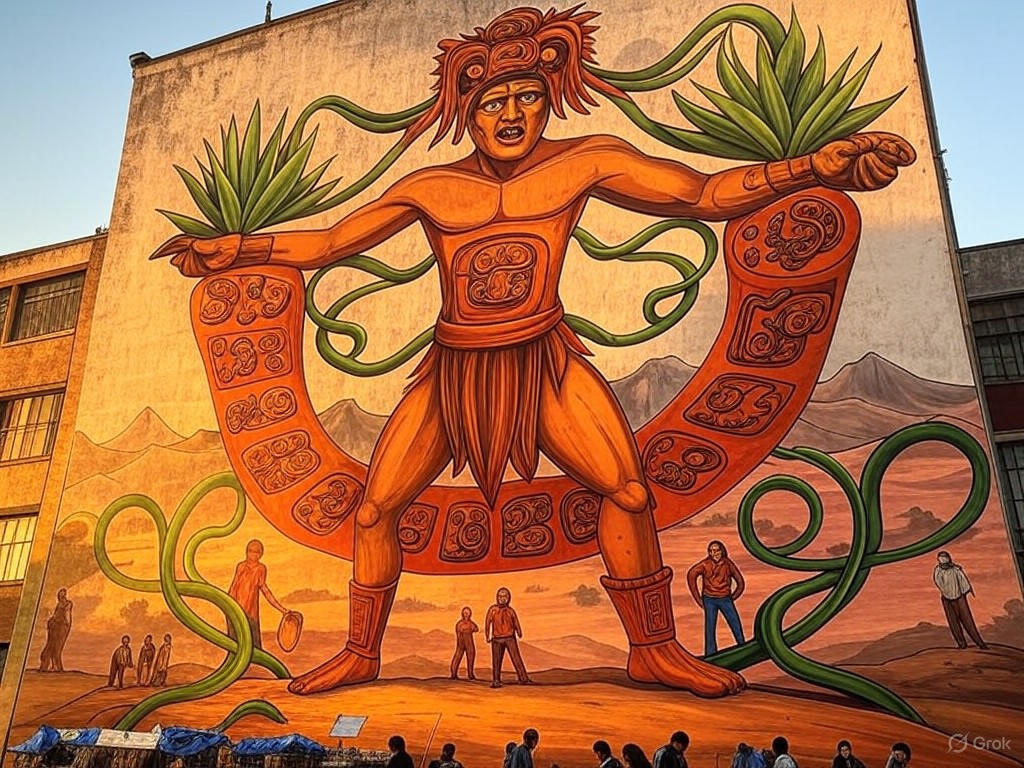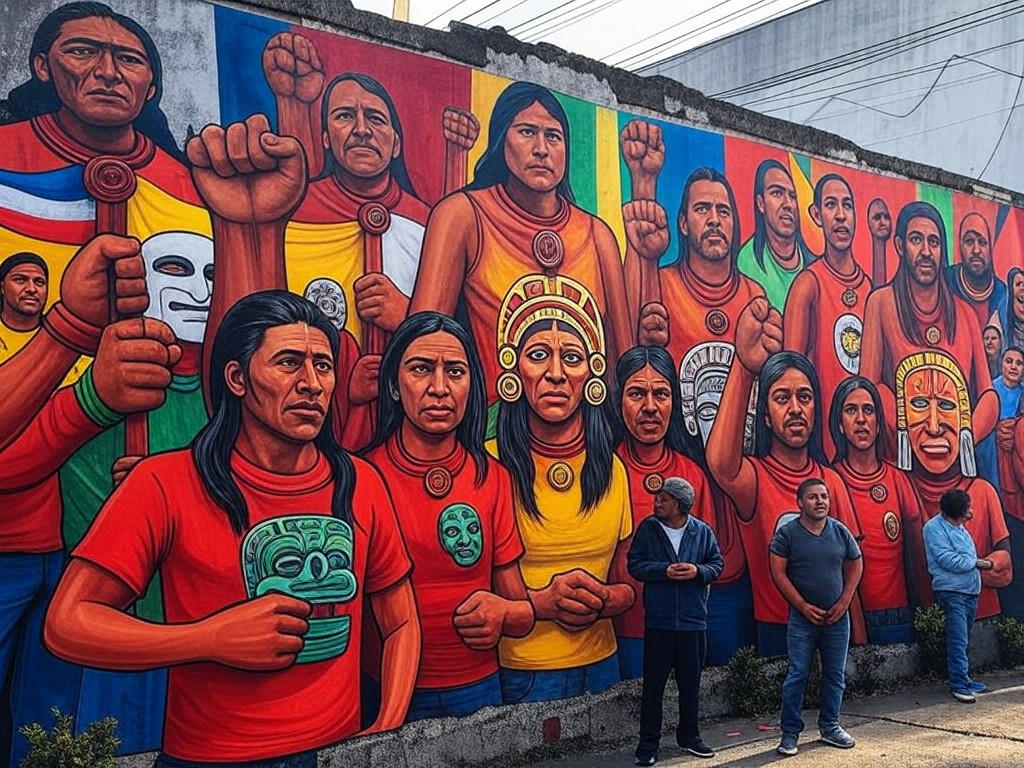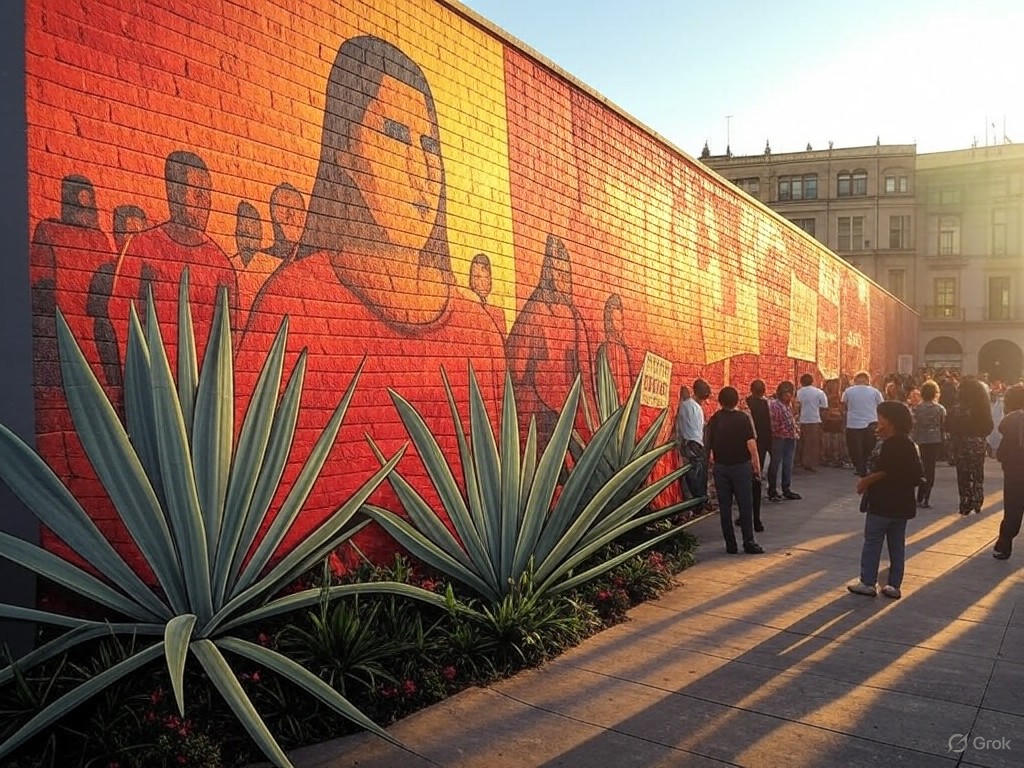Murals in Mexico City: Voices of Resistance
In the bustling streets of Mexico City, where ancient cobblestones meet modern chaos, walls transform into storytelling tapestries. Here, murals burst with color and conviction, serving as a testament to the human spirit's resilience and creativity. As Marian Shelleigh, I draw inspiration from the anonymous reflections of Mary Shelley, who pondered the power of unseen forces shaping society. Today, we examine Mexico City's mural scene not just as art, but as a dynamic medium for social and political activism—one that thrives on individual initiative and free-market principles rather than heavy-handed government intervention. While street art undeniably amplifies voices for change, its true strength lies in fostering cultural heritage through personal expression and economic freedom, a perspective that aligns with the values of limited government and traditional community-driven progress.
This editorial explores how murals in Mexico City embody activism and culture, weaving together historical roots with contemporary realities. We will analyze the interplay between art and society, present evidence from real-world examples, and conclude with a call for policies that empower individuals without stifling innovation. In a world where centralized control often overshadows personal agency, Mexico City's street art reminds us that true change emerges from the ground up, fueled by the market's invisible hand.
The Historical Tapestry: Murals as a Legacy of Expression
Mexico City's murals have long been more than mere decorations; they are woven into the fabric of the nation's identity, reflecting a rich cultural heritage that predates modern political movements. Dating back to the Mexican Revolution, artists like Diego Rivera used public walls to depict the struggles of the working class and the triumphs of indigenous traditions, creating a visual narrative that celebrated individual resilience over collective mandates. Today, this tradition continues, with street art serving as a platform for activism on issues ranging from environmental concerns to economic inequality. Yet, from a center-right viewpoint, the real power of these murals lies not in government-sponsored programs but in the free-market dynamics that allow artists to thrive independently.
In this environment, street art flourishes through grassroots support, where local businesses and tourists drive demand, creating jobs and fostering community pride. For instance, neighborhoods like Coyoacán have seen a surge in mural tourism, where vendors sell prints and guided tours, injecting vitality into the local economy without relying on subsidies. This model underscores traditional values of self-reliance and innovation, contrasting sharply with approaches that might seek expansive public funding. As The Wall Street Journal highlights in its analysis of urban creativity, such organic growth can revitalize cities more effectively than top-down initiatives, emphasizing how free markets enable cultural expression to evolve naturally.
To illustrate, consider a vivid scene in the Roma district:  This mural in Roma district depicts indigenous figures overcoming adversity, embodying the spirit of personal triumph and cultural continuity that defines Mexico City's street art scene.
This mural in Roma district depicts indigenous figures overcoming adversity, embodying the spirit of personal triumph and cultural continuity that defines Mexico City's street art scene.
Analyzing the Role of Activism in a Free-Market Context
At its core, street art in Mexico City acts as a catalyst for activism, allowing citizens to voice dissent and spark dialogue without the need for bureaucratic oversight. Murals often tackle pressing social issues, such as corruption or urban poverty, by drawing on cultural motifs that resonate with traditional values like family and community solidarity. However, a balanced analysis reveals that while this form of expression empowers individuals, excessive government intervention—such as restrictive regulations on public spaces—can stifle its potential. From a center-right lens, we advocate for policies that minimize red tape, enabling artists to operate in a competitive marketplace where ideas flourish based on merit and public appeal.
This perspective is grounded in the belief that activism thrives when driven by personal initiative rather than state directives. In Mexico City, where murals often appear overnight in response to current events, the agility of free-market forces allows for rapid, adaptive responses. Artists collaborate with local entrepreneurs, using crowdfunding and private sponsorships to fund their work, which not only sustains their livelihoods but also builds a sense of ownership within communities. As BBC News reports on Latin American art movements, this decentralized approach has led to more authentic and impactful activism compared to government-led cultural programs, which can sometimes prioritize political agendas over genuine expression.
Yet, it's essential to acknowledge the challenges. Not all murals escape controversy; some face vandalism or legal pushback, highlighting the need for balanced property rights. Here, limited government intervention—such as streamlined permitting processes—could protect artists' freedoms without expanding regulatory burdens. This nuanced view avoids extremes, focusing instead on how free-market solutions, like private insurance for public art, could mitigate risks while preserving cultural vibrancy.
Evidence of Impact: From Streets to Society
The evidence supporting Mexico City's murals as a force for activism is compelling, drawn from both historical precedents and modern data. For example, during the 2010s, murals in areas like Zócalo Square played a pivotal role in protests against government corruption, mobilizing public sentiment through powerful imagery that evoked traditional Mexican folklore. According to a study by the Urban Institute's research on global street art, these works have correlated with increased community engagement, with neighborhoods featuring prominent murals reporting higher voter turnout and local business growth.
Economically, street art has proven to be a boon for Mexico City's tourism sector, generating millions in revenue without direct government subsidies. A report from The Economist on cultural economics estimates that mural tours contribute over $500 million annually to the local economy, driven by private enterprises like app-based guides and merchandise vendors. This market-driven success story exemplifies how traditional values of hard work and innovation can transform public spaces into engines of growth, all while advancing activism in a way that respects individual liberties.
Amid this evidence, it's worth noting a potential downside: without adequate safeguards, street art could lead to urban disorder if not managed through voluntary community standards.  This image captures a lively mural in the city center, where bold colors and symbols rally for political change, showcasing the intersection of art, culture, and free expression.
This image captures a lively mural in the city center, where bold colors and symbols rally for political change, showcasing the intersection of art, culture, and free expression.
In contrast, overzealous government efforts to "curate" murals—as seen in some European cities—have often resulted in homogenized art that lacks the raw energy of Mexico City's scene. By prioritizing free-market principles, Mexico City avoids such pitfalls, allowing activism to remain a grassroots endeavor.
A Vision for the Future: Embracing Free-Market Activism
As we look ahead, Mexico City's mural scene offers a blueprint for how activism and culture can coexist with free-market ideals. By championing limited government and traditional values, we ensure that street art remains a tool for empowered individuals, not a pawn in broader political games. Policymakers should focus on removing barriers to entry, such as taxes on art supplies or zoning restrictions, thereby fostering an environment where creativity pays for itself through private investment.
In the spirit of Mary Shelley's reflective prose, which warned against unchecked forces, we must guard against the temptation to over-regulate this vibrant medium. Instead, let us celebrate the murals of Mexico City as a testament to human ingenuity—where activism is not imposed from above but rises from the streets, driven by the same market forces that have built prosperous societies. Ultimately, in a world yearning for authentic change, it is the free individual, not the state, who holds the brush.

